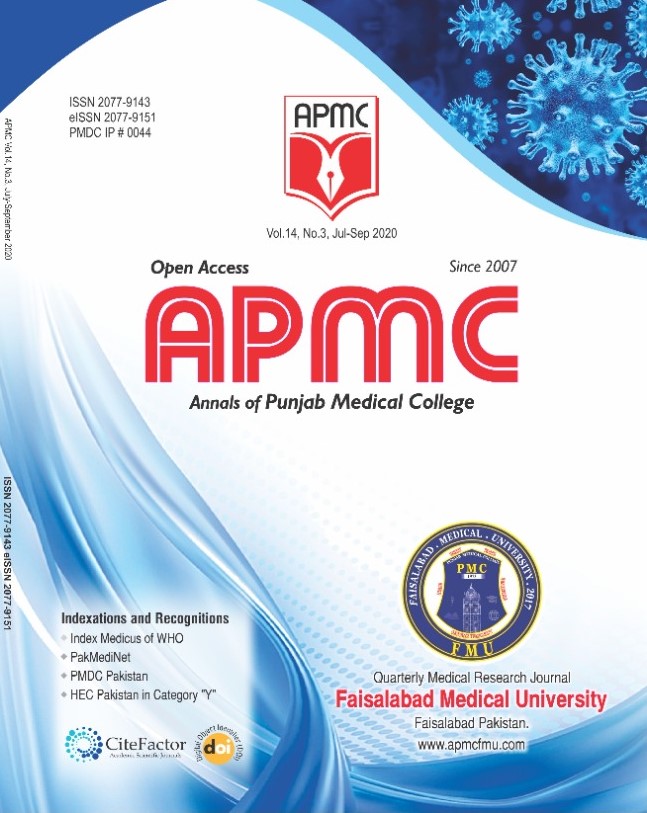Clinical Profile of Pediatric Alopecia Areata in Faisalabad City
Abstract
Background: Alopecia areata is the most prevalent inflammatory disease involving a non-scarring type of hair loss. Objective: The current study was undertaken to evaluate the clinical features of pediatric alopecia areata among the local population of Faisalabad. Study Design: Cross-sectional study. Settings: Government General Hospital, Ghulam Muhammad Abad, Faisalabad. Duration: From March 2019 to August 2019. Methodology: By convenient sampling technique, fifty patients diagnosed by a physician were recruited and baseline information such as age, age at onset, sites affected, the severity of the disease, associated diseases, and family history were recorded. Data were expressed in continuous variables by using the mean standard deviation (SD) method. Categorical variables were used to enlist and document data by using frequencies. Results: The mean age at onset was 4.3 ± 0.72 years and 7.1 ± 0.05 years in the case of girls and boys respectively. With the male to female ratio of 1.17:1, PAA was more prevalent among boys. It mainly targeted the scalp region (p value = 0.043) that is up to 98% of patients along with the deterioration of eyebrows, eyelashes, and whole-body hairs. One-fourth cases under study had a significant positive family history for psoriasis (p value = 0.048) and atopic disorders had a significant association with alopecia areata (p value = 0.032). Conclusion: The study inferences are male predominance, mild manifestations in the scalp region, and positive family history for psoriasis suggesting underlying genetic background. Atopic disorders were found to be commonly associated with AA. Further studies with a large sample size should be executed to evaluate its clinical profile properly.

 This work is licensed under a
This work is licensed under a 